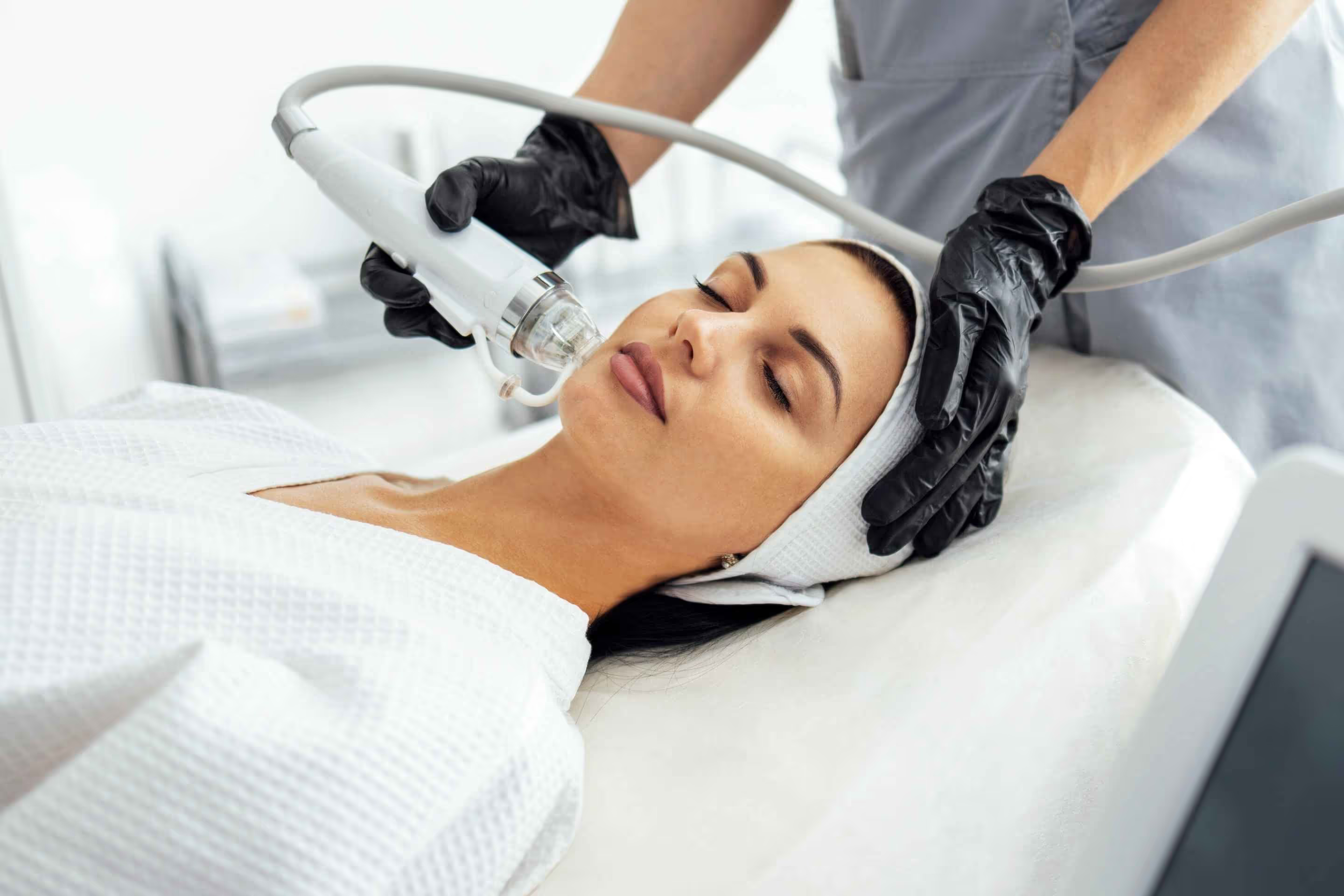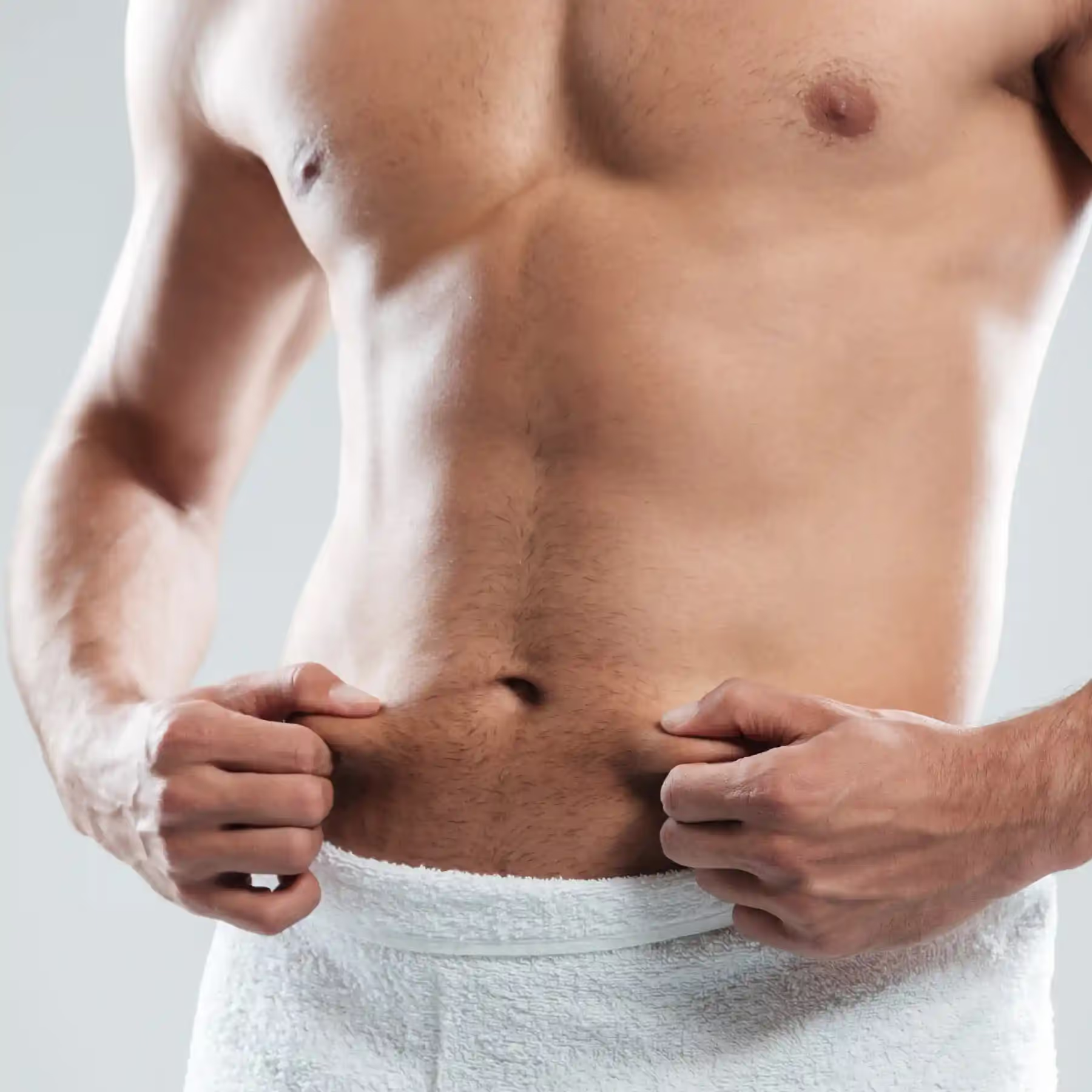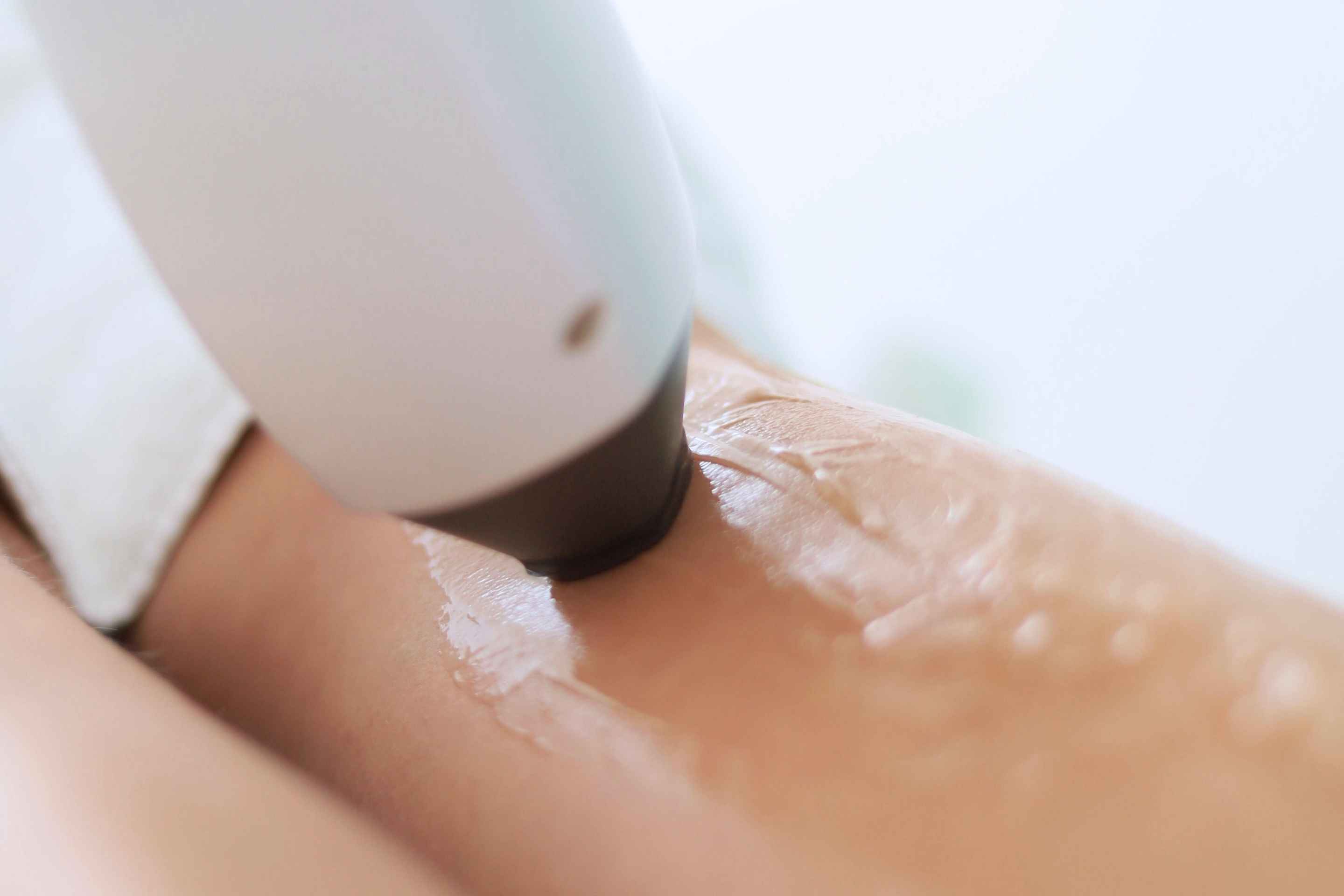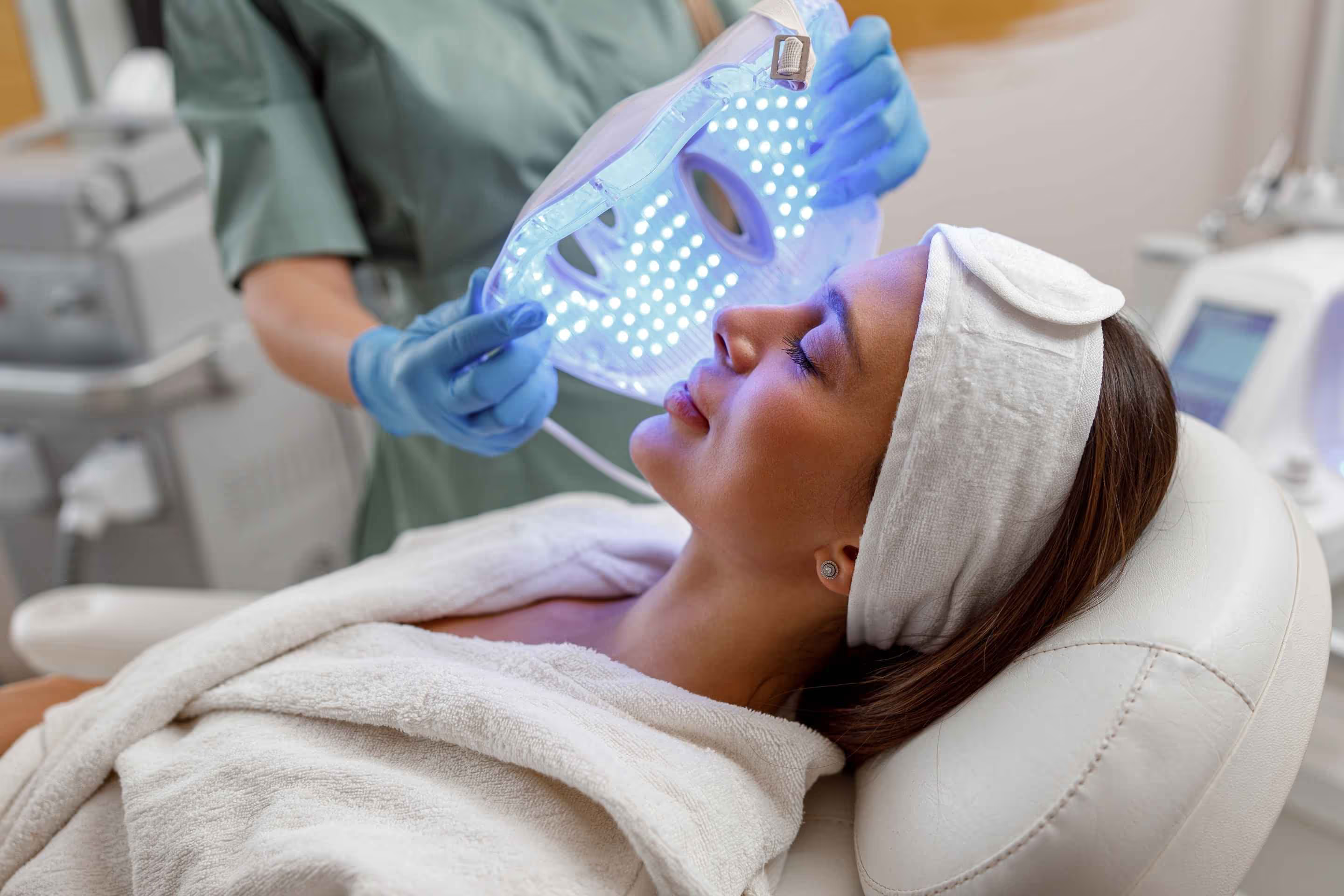RF treatment — what is it?
Radiofrequency is a technology based on the action of high-frequency electromagnetic waves, often used in aesthetic medicine. During the procedure, there is a controlled heating of the tissues, which triggers the natural regenerative processes. Increasing the temperature leads to contraction of collagen fibers and stimulation of fibroblasts. The result is an increased production of new collagen fibers, which are responsible for the firmness and elasticity of the skin.
RF treatments can be carried out alone or in combination with other technologies. One of the variants is microneedle radiofrequency — it combines the action of waves with micro-punctures, which allows it to reach deeper layers of the skin. Thanks to this, it is possible to achieve the effect of firming, smoothing and thickening of the skin without resorting to invasive surgical procedures.
When is it worth doing radiofrequency?
Radiofrequency is used in many areas. The treatment improves the firmness of the skin, is suitable for facial wrinkles and drooping oval of the face, and is also used in the treatment of acne scars. It also helps reduce body fat, especially in areas such as thighs, abdomen or arms.
The procedure is chosen by people struggling with loss of skin elasticity and those who want to achieve the effect of skin lifting without the use of a scalpel. Radiofrequency has also been shown to be effective in improving the appearance of the skin after intensive weight loss. In addition, there is an improvement in the texture of the skin and a reduction in wrinkles in the sensitive areas of the face.
RF, cosmetic treatment — how is it done?
The RF procedure is a non-invasive and painless procedure, performed in an office setting. The specialist applies a head emitting radio waves to the skin, previously applying a conductive gel, which improves the contact of the device with the skin surface and facilitates the uniform distribution of energy. The skin itself must be thoroughly cleaned and dried beforehand. The emitted energy heats the deeper layers of the skin to a temperature that stimulates natural regenerative mechanisms and tissue remodeling.
During the procedure, the patient feels pleasant warmth — there is no pain or discomfort, and there is no need for anesthesia. Depending on the size of the area to be treated, the procedure usually lasts from 30 to 60 minutes. When finished, the skin may be slightly reddened, sometimes slightly swollen, but these symptoms disappear within a few hours. The procedure does not require recovery, so the patient can immediately return to his daily activities.
Radiofrequency — how often should it be done?
For best results, a series of treatments is recommended. Most often, 4 to 6 sessions are performed at weekly or fortnightly intervals. The frequency depends on the condition of the skin, its reaction and the expected effect.
After the end of the series, it is worth considering booster treatments — once every few months — to maintain the effects. Performing the procedure regularly helps maintain the effect of firmness and elasticity, as well as enhances visible results - such as smoothing wrinkles or improving skin tone. The indicated number of sessions is determined individually in the course of consultation with a cosmetologist.
Summer or winter — when is it better to plan your treatment?
Choosing the right moment is important for the regeneration of the skin after the procedure. In winter and autumn, conditions are more favorable, as low sunlight minimizes the risk of discoloration and irritation. In the summer, although it is possible to perform radiofrequency, it is necessary to strictly follow the postoperative recommendations.
After the procedure, do not expose the skin to UV radiation. The sun can lead to pigmentation disorders, and weakened skin is more prone to overdrying and premature aging. In summer, it is especially important to use high sun protection (SPF 50) and avoid sunbathing, sauna, pool and intense physical exertion for a few days after the procedure.
People who decide to use radiofrequency in the warmer months should plan it outside the holiday periodto limit sun exposure and provide the skin with optimal conditions for regeneration.
How to prepare for radiofrequency surgery?
Proper preparation for RF treatment in Warsaw affects its effectiveness and reduces the risk of side effects. A few days before the planned visit, it is worth giving up cosmetics containing retinol, acids and other irritants. The skin should be in good condition — without inflammation, active acne or damage to the epidermis.
The day before the procedure, you should not use the solarium or undergo intense sunbathing. Contraindication is also hot baths, sauna and alcohol consumption. On the day of the procedure, the skin must be clean - without makeup, creams and other cosmetics. Before starting the procedure, the specialist will conduct an interview and assess the condition of the skin in order to select the correct parameters of action and confirm the absence of contraindications.
A responsible approach to pre-treatment recommendations avoids irritation and increases the effectiveness of radiofrequency, regardless of the time of year in which we decide to use it.
Alma Primex — technology for the discerning
In professional practices, advanced solutions are available that combine different technologies to increase efficiency. One of them is Alma Primex — a platform that uses both radio waves and ultrasound. Thanks to the different heads, you can adjust the treatment to the needs of a specific area of the body.
The UniFace head allows precise action on the face - supporting skin lifting and counteracting problems such as the sagging oval of the face. On the other hand, the UniBody head allows you to work in areas covered by adipose tissue - such as thighs or abdomen - supporting the reduction of adipose tissue and improving the firmness of the skin.
In our Salon of Aesthetic Cosmetology in Warsaw Procedures are performed by experienced specialists who select the method and technology individually to the needs of the patient. The duration of one session is from 30 minutes, and the treatment can cover areas such as the face, décolleté, arms, legs, abdomen or buttocks. The use of radio wave and ultrasound allows you to effectively reach the deeper layers of the skin, which translates into a noticeable improvement in skin texture and collagen production.
FAQ:
- RF treatment — what is it?
Radiofrequency (RF) is a procedure that uses high-frequency electromagnetic waves to heat tissues below the surface of the skin. Heat stimulates fibroblasts to produce collagen and triggers regenerative processes. The result is firmer, tighter skin and smoothing of fine wrinkles. - Is the RF procedure painful?
No, the procedure does not cause pain. During the procedure, only moderate heat is felt in the place of action of the head, which for many people is downright relaxing. After the procedure, the skin may be slightly pink, however, there is no need to give up daily duties. The whole thing proceeds without anesthesia and does not require convalescence. - When is the best time to do radiofrequency?
Radiofrequency is best planned in the autumn-winter period or early spring, when sunlight is low. In summer, you can also opt for it, but it is necessary to avoid exposure to the sun, use SPF 50 filters and give up the solarium, sauna or pool for a few days after the procedure.









